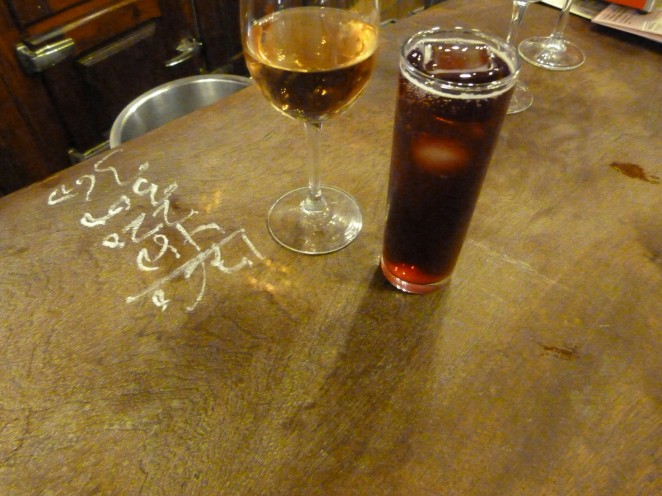If you’ve been to Madrid before, you’ve probably visited the royal palace, some beautiful plazas, and the many other great tourist attractions this city has to offer. Of the handful of European capitals that I’ve been to before, I would suggest that Madrid’s features are some of the most resplendent and memorable. But the world does not need another blog post about the obvious appeals of this Spanish city. Hence, I offer you here five other things to do when in Madrid.
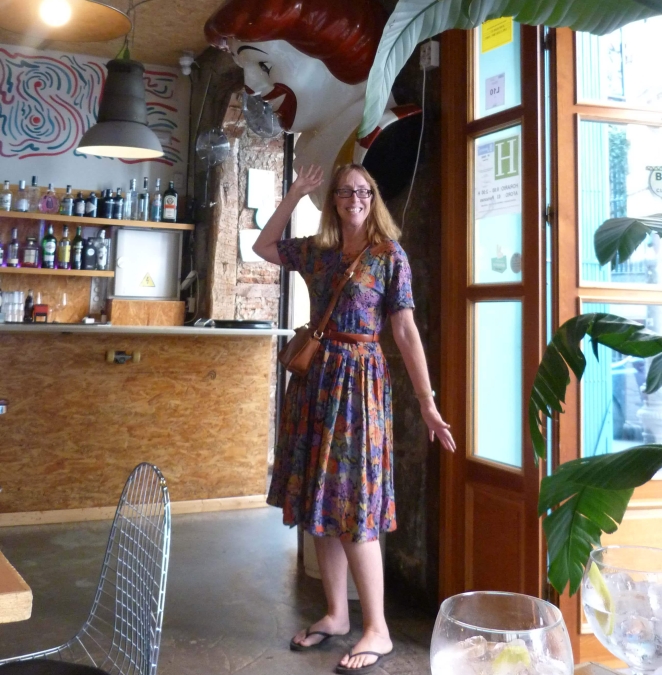
The unique decor of Zombie Bar
1. Explore the “Brooklyn” of Madrid
It is well known, apparently, that Chueca is the hippest neighborhood in Brookl-I-mean-Madrid. And it is indeed funky, but it’s starting to turn chi-chi rather than chai-chai. However, it’s neighbor Malasaña has inherited that grungy, gentrifying vibe from Chueca. Part red light district, part old family businesses, this area is now interspersed with cute clothing boutiques, artisanal cocktail bars, and Instagram-worthy food-porn restaurants. By pure happenstance, our Airbnb was located here and we had a great time exploring the neighborhood and finding some good seats from which to people watch. Much like riding the L train as it goes from west Manhattan to Brooklyn, the outfits quickly digressed into overalls, mom jeans, and crop tops. You could lose hours wandering around here or drinking in Zombie Bar with the light-up Ronald McDonald head. You know, the usual.
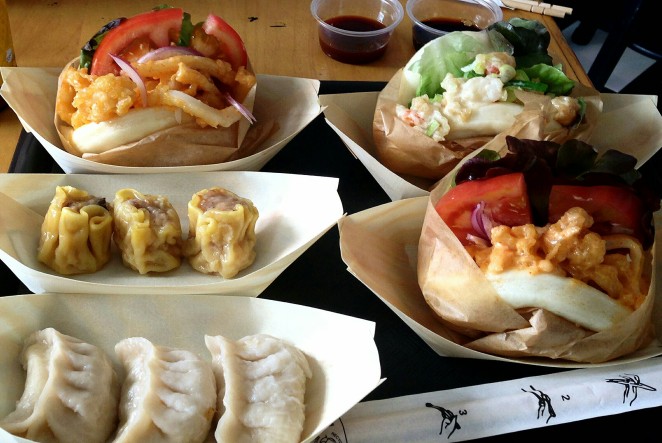
Baos and dim sum at Toy Panda in Madrid
2. Ethnic Cuisine
Of course, Madrid offers excellent native cuisine from pigs ears to tapas classics gone gastronomized (i.e. liquified tortillas). Our favorite meals, though, were some ethnic influences brought in through the active trail of immigrants to this cosmopolitan city. We ate a three course Peruvian meal in Malasaña for only €10 at Ceviche Madrid, including a hearty portion of ceviche (obviously) and stone fruit jelly for dessert. For a more casual meal, we ate baos at Toy Panda not once, but twice within a five day span in a city with a gazillion fabulous restaurants. If that doesn’t tell you something about these amazing Chinese bun sandwiches, I don’t know what will! We loved everything we tried from the wasabi mayo tempura prawn bun to the Korean sriracha sauced crispy squid bun to the wide array of dim sum. Nothing in Toy Panda’s dishes could be faulted, each bite was perfect. Except for the last bite, because it made me sad.
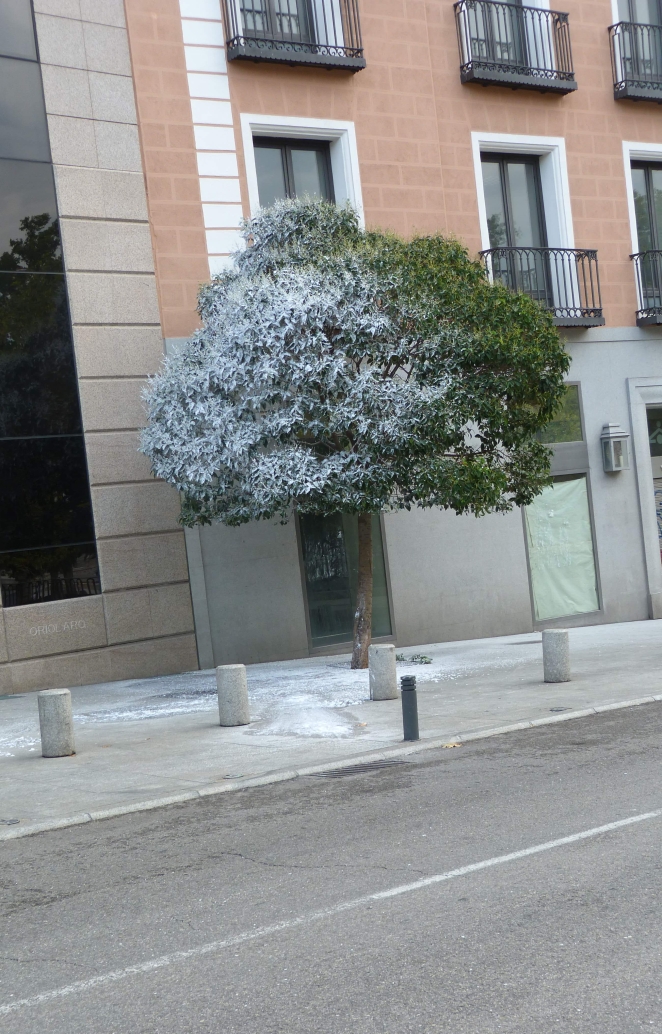
You never know what you might see…
3. The Lesser-Known Collections
Madrid is famous for its art museums, namely El Prado and La Reina Sofia. Most people burn out after one or two art museums per vacation, but People of The World, don’t give up! Museo Thyssen-Bornemisza has a fantastic collection including works from Caravaggio to Dali to Renoir to name just a few. Arranged with the oldest pieces on the top floor so that patrons are obliged to work their way down to the modern exhibitions on the lower floors, this museum offers a great morning activity and is easily located on the same stretch of road as many other major Madrid museums. Best of all, there were so few people there, even during tourist season. No one with a big head to block out Cezanne, yes!
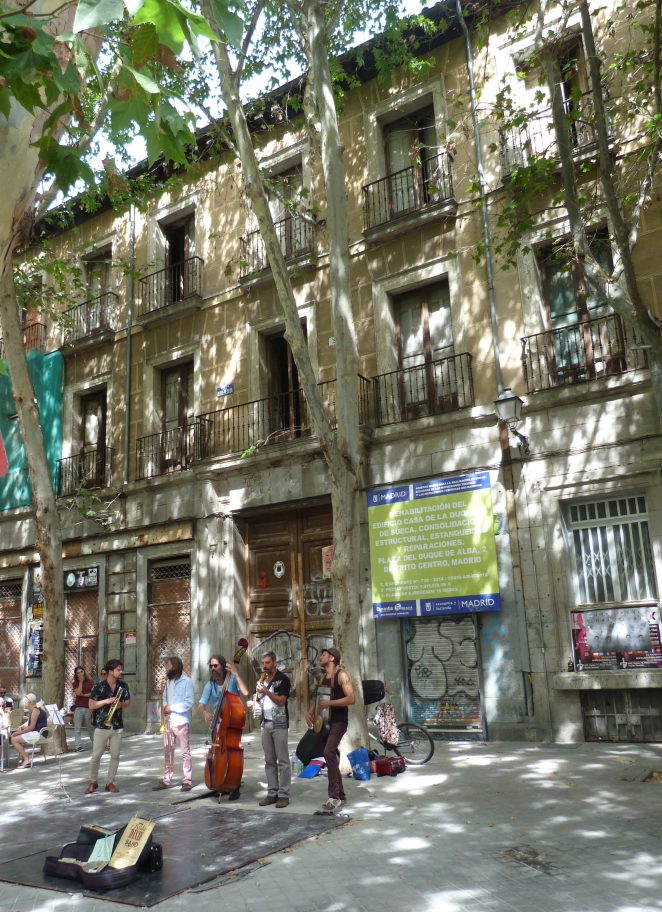
A Dixieland band jamming in La Latina
4. Sunday Street Party
We were fortunate to be in Madrid for a Sunday morning, which allowed us to go down to La Latina, way past Plaza Mayor, to the Il Rastro market. The market itself was overcrowded and offered the same standard issue stalls selling “hemp pants actually probably possibly made in or near Nepal”, but there were street performers all over that kept the crowds upbeat and moving. Hands down, the best musicians we saw were right at the top of the market and they were killing it with Dixieland standards. Situated in a mercifully shady courtyard, this group of artists were jamming out with huge smiles on their faces as small children danced clumsily in front of the “stage”. Next time, I will skip the market and just bring a picnic chair to watch the street acts at their best, just as the locals were doing.

Sunset on the Gran Via
5. Rooftop Bar Market
Mercado San Anton is still a little off the beaten tourist path, but it won’t stay this way for long. Situated on a quiet street in the “Brooklyn” part of town, this market is comprised of three upper levels that are pristine and visually appealing to anyone with a tongue. The first story houses about twenty or so food vendors selling fresh produce, perfect pastries, and a wide variety of charcuterie. The next level up offers more prepared foods, a small art gallery, and a colorful bar with a secluded open air balcony. The top floor is an open-air bar with a wide skyline view of the neighborhood that dazzles during sunset. In short, there is something for everyone here. So everyone should go. Except don’t, this is Madrid’s best kept secret.
That’s the funny thing about traveling, isn’t it? There’s usually a reason places are visited by droves of visitors — because it is historically significant or offers a unique sighting of something that cannot be experienced elsewhere. But when something becomes a must-see, it is promptly ruined by the foot traffic, the rules, and the 25,000 photos of the exact same doorway posted to Facebook. See this recent article from The Guardian on UNESCO heritage designations ruining places. Seriously, we are one hundred percent guilty of this.
We often say to each other, “Wow, it would be so cool to have visited this place 200 years ago, there’d be no one here! It would actually be a novel experience. Our friends and family wouldn’t believe what we’d seen. Souvenirs would actually be treasured. It would be so fascinating!” However, if that were the case — that we tried to travel 200 years ago, we’d be pretty much out of luck between the prohibitive cost of travel and the basic resource of time it would have required. So really, I can’t complain that Madrid has been trampled over by a million gagillion people. The resources that make it possible for everyone else to enjoy Madrid are the same resources that I benefit from. And I’m glad I went.
-Sophie




















